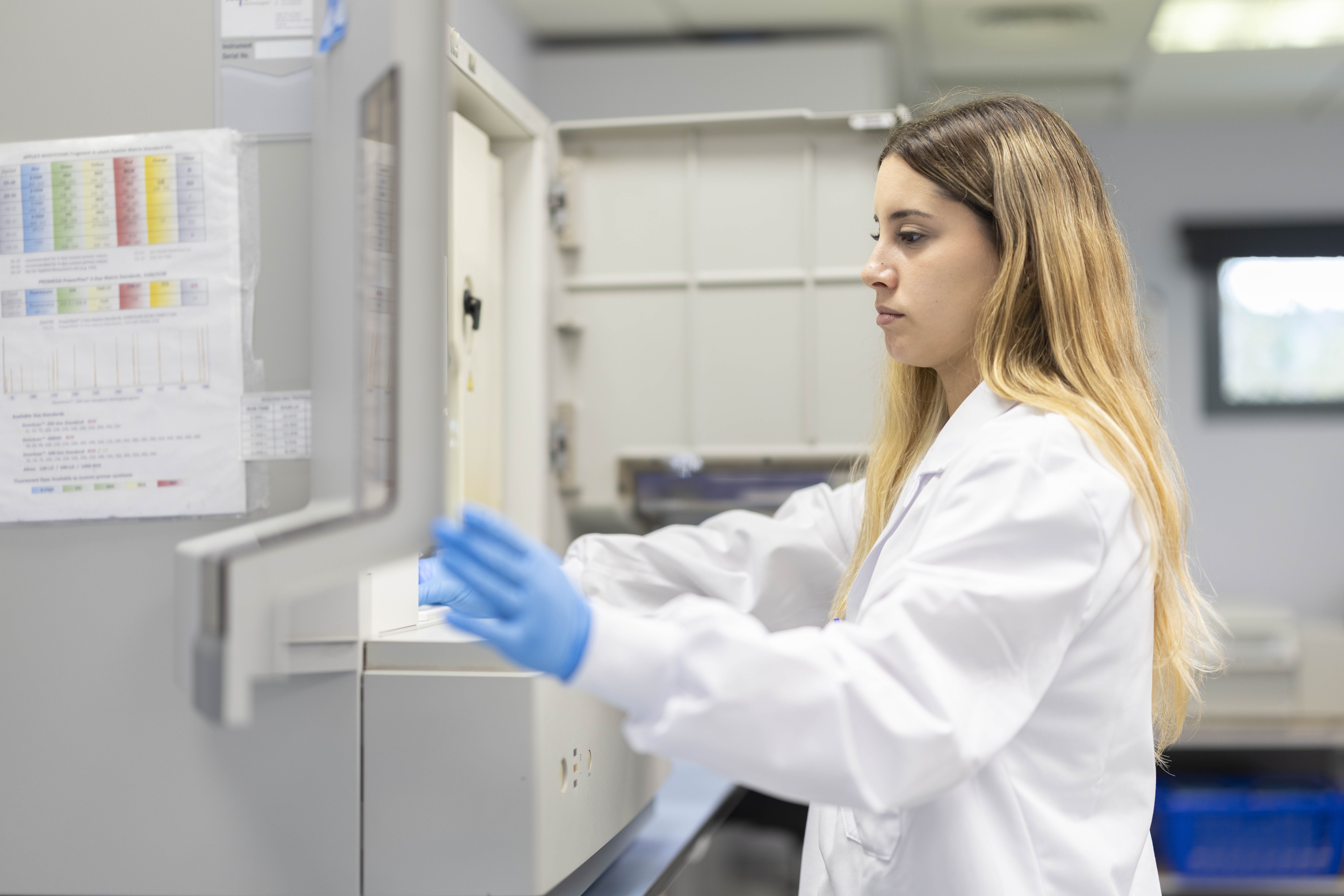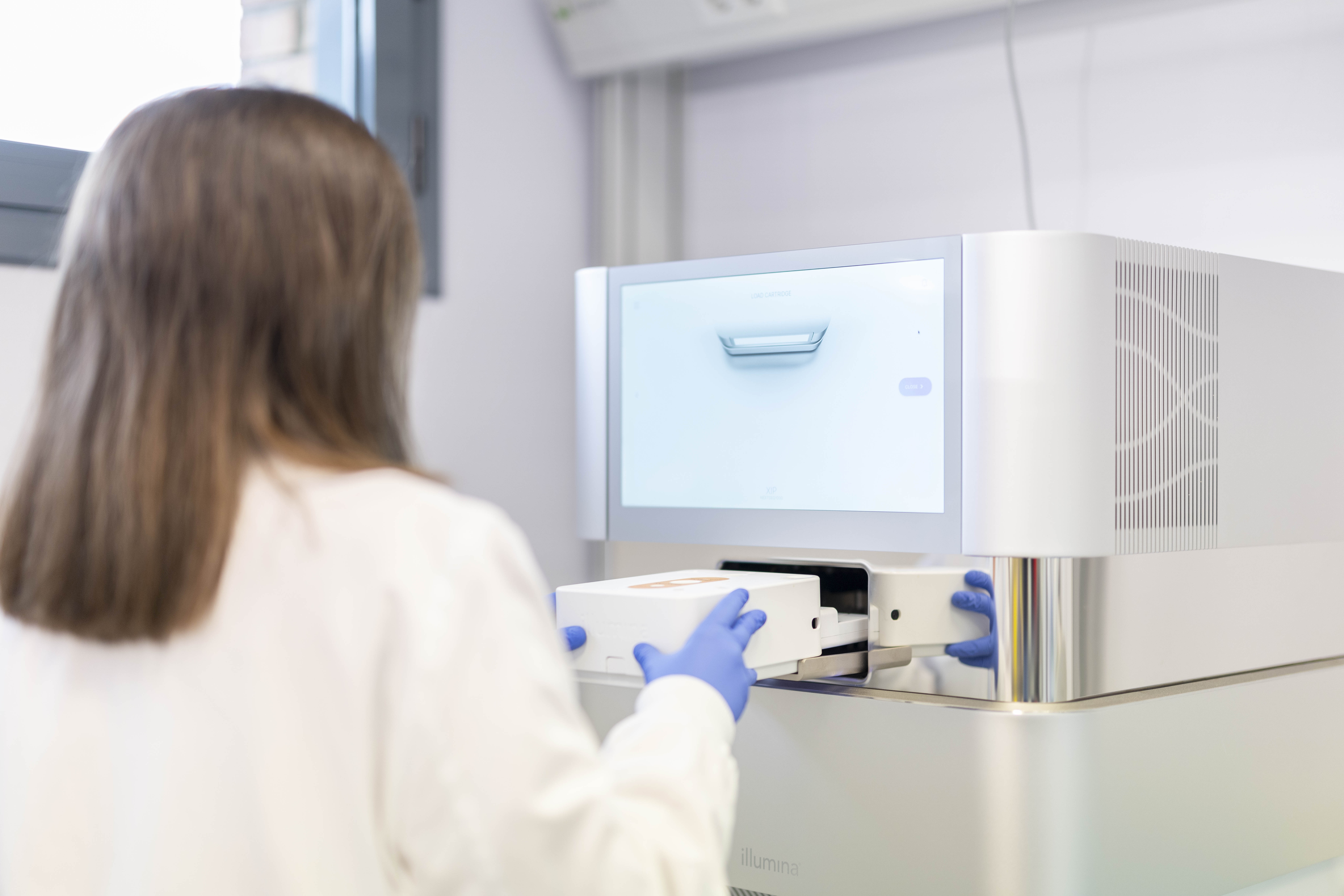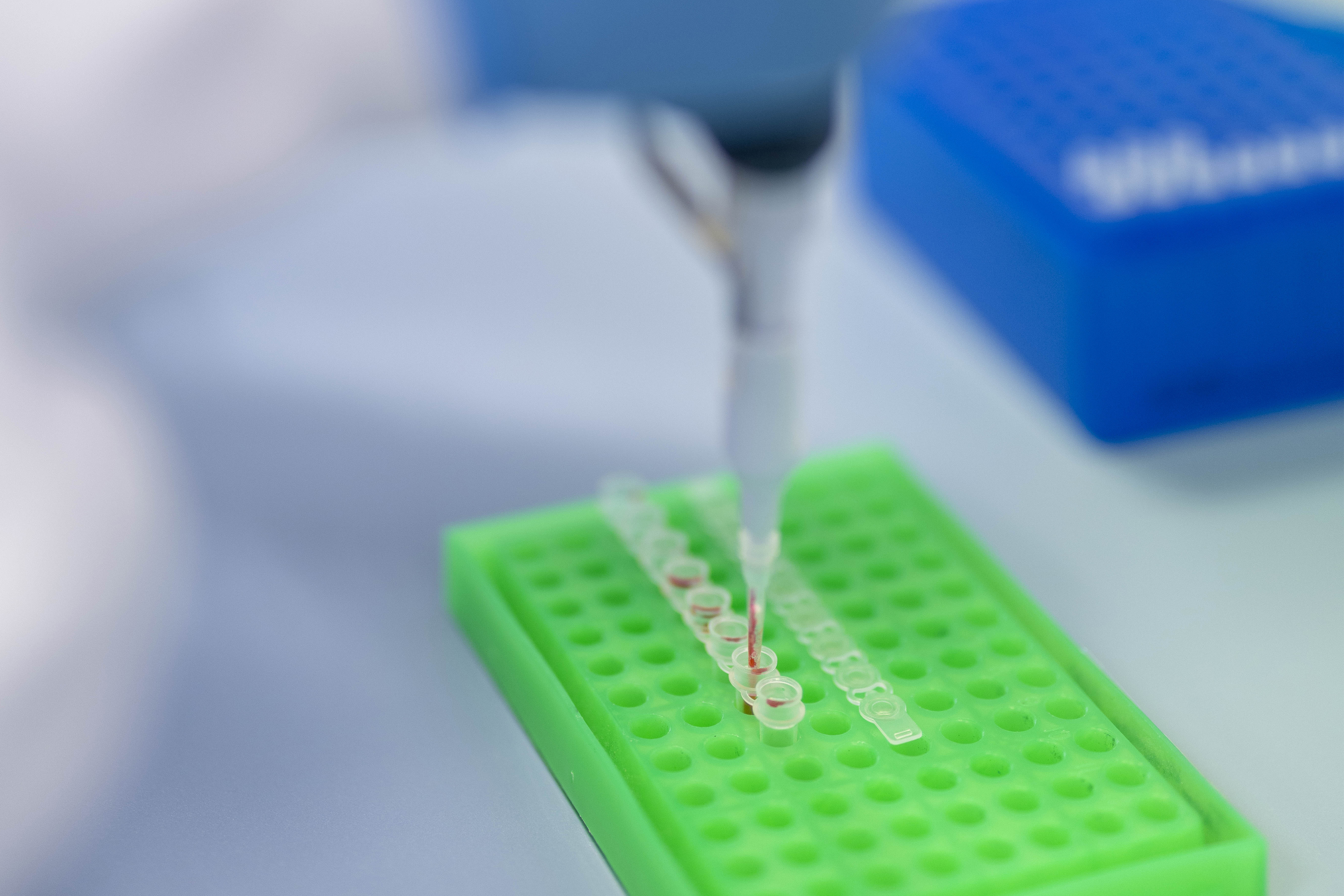Translational Genomics
Genetic Analysis Service
We conduct the genetic study of interest based on various technical approaches depending on the final result expected by the researcher:
a) Deep Sequencing (NGS)
Used for the determination of DNA and RNA sequences. It includes library preparation and subsequent high-throughput sequencing (parallel and massive sequencing simultaneously) of the genomic region of interest. The depth of reads obtained allows for a significant increase in the level of detection.
Library preparation is carried out using various approaches depending on the intended outcome and the quality/quantity of the available sample.
Applications: DNA sequencing (whole genome sequencing, WGS) of human samples and complete simple genomes (small genomes); b) exome sequencing (WES); c) Targeted sequencing including custom-designed panels, 16S and ITs; d) Metagenomics (shotgun sequencing); e) Transcriptomics, RNA-Seq profiling and single-cell and single-nucleous RNA-Seq; f) small RNAs/miRNAs-seq.
Sequencing is performed using two MiSeq® Personal Sequencers (Illumina), a NextSeq-2000 (Illumina) and a MinION sequencer (Oxford Nanopore). The single-cell and single-nucleous separation is carried out in a BD Rhapsody™ Express Single Cell Analysis System (Becton Dikinson) associated to a dedicated scanner.
b) Sanger Sequencing
It is the gold standard technique for genetic diagnosis when specific regions of the genome need to be analysed. It allows both Sanger method-based sequencing and gene fragment analysis (genescan).
The most common applications are: a) de novo DNA sequencing; b) mutation detection/confirmation; c) allelic discrimination studies (SNPs); d) analysis of gene methylation profiles in CpG islands of genomic DNA (MSP); e) analysis of variable number of gene copies (CNVs); f) microsatellite analysis (STRs, VNTRs); g) ligation-mediated PCR and Multiplex Ligation-dependent Probe Amplification (MLPA).
This is carried out on the ABI 3130xl Genetic Analyzer (Applied Biosystems).
c) Capillary electrophoresis for nucleic acid quality analysis
We have a 4150 TapeStation bioanalyzer (Agilent), an automated system for qualitative and quantitative analysis of nucleic acids based on capillary electrophoresis.
We offer quality/quantity analysis of: a) gDNA (including the calculation of DIN integrity); b) DNA fragments (between 150-5000bp); c) RNA in standard and high-sensitivity formats (including the calculation of RIN integrity); d) cfRNA.
d) Nucleic acid amplification
-
Real-time PCR, allows determining the quantity of DNA, RNA, or miRNAs present in the original sample (qPCR) or qualitatively identifying specific DNA samples (genotyping).
The main applications are: a) absolute/relative quantification of differential gene expression profiles; b) allelic discrimination studies (SNPs); c) analysis of gene methylation profiles in CpG islands; d) determination of gene copy number in genomic (CNVs) or viral DNAs; e) gene dosage quantification (QFPCR for aneuploidy detection); f) High Resolution Melting (HRM) for gene scanning.
-
Digital PCR (dPCR). This technology fragments each sample into over 20,000 partitions where PCR occurs. It can be performed using double-stranded intercalants or fluorescently labelled probes and provides absolute and ultra-sensitive nucleic acid quantification. It is particularly useful for quantifying low-abundance gene fragments, allelic variants (SNP), viruses, and bacteria poorly represented in a heterogeneous mixture, etc.
-
Experimental design advice and sample preparation
-
Real-time PCR and digital PCR data analysis
-
Overall interpretation and assistance for data publication
Complementary services
- Fluorimetric quantification of DNA and RNA using a two-channel fluorimeter.
- Automated liquid dispensing using an EpMotion 5070 station (Eppendorf). It can prepare serial dilutions, PCR assays, transfer samples from tubes to plates (96w and 384w), plate reformatting, etc.
Experimental design advice, sample preparation, result analysis, and overall data interpretation are also offered.



